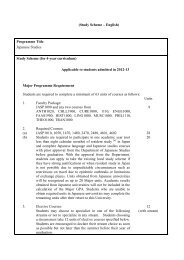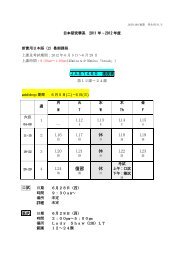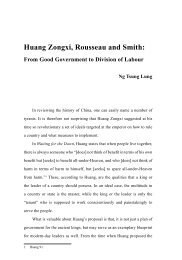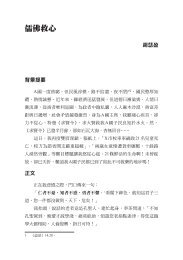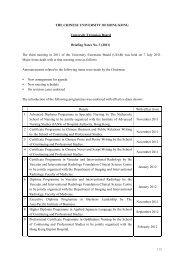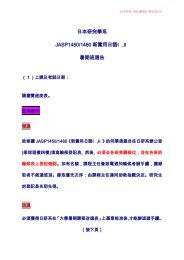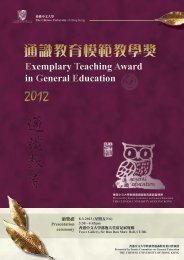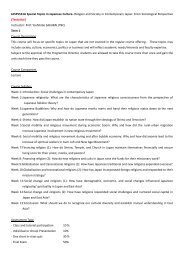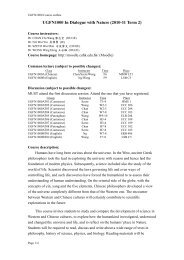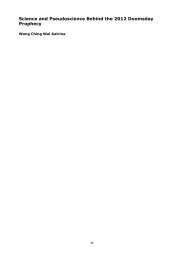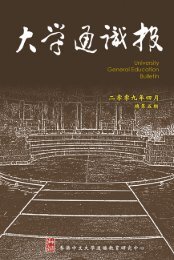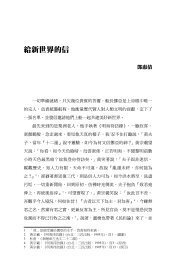ä¸è¼å ¨æ¸ - The Chinese University of Hong Kong
ä¸è¼å ¨æ¸ - The Chinese University of Hong Kong
ä¸è¼å ¨æ¸ - The Chinese University of Hong Kong
Create successful ePaper yourself
Turn your PDF publications into a flip-book with our unique Google optimized e-Paper software.
24 Special Topic: Assessment in <strong>University</strong> General Education Program<br />
reflections). For example, imagine a business communications course with an<br />
affective ILO that reads, “Students will be able to recognize and act on their<br />
pr<strong>of</strong>essional responsibility to the local business community.” In this course,<br />
students engage in field work with local non-pr<strong>of</strong>it agencies to improve<br />
communications plans and marketing materials. Students may be prompted<br />
to answer such questions in their journals as, “How did this experience<br />
make you feel” Subsequently, students may be asked to demonstrate a link<br />
between emotion and analysis by answering questions such as, “What are the<br />
implications <strong>of</strong> this experience and <strong>of</strong> your reaction to it, for how you will<br />
think, feel, and act in the future” Through these activities, students can learn<br />
to analyze how emotion shapes their understanding <strong>of</strong> a social problem, as<br />
well as how the social problem shapes their emotions and future behavior<br />
(Felton et al., 2006). While journaling does not directly assess students’<br />
attitudes or proclivity to become involved in pro bono business consultations<br />
in the future, the content <strong>of</strong> the journals can be seen as a behavioral proxy for<br />
the students’ attitudes about their pr<strong>of</strong>essional responsibilities, which cannot<br />
be measured directly.<br />
Self-Report Questionnaires. Another method <strong>of</strong> assessing affective<br />
ILOs involves asking students to report on their attitudes or values via a<br />
questionnaire. Such questionnaires are relatively easy to develop or adopt<br />
from other sources, and are <strong>of</strong>ten used in a pre-test, post-test design. In this<br />
manner, students’ attitudes can be assessed at the beginning <strong>of</strong> a course<br />
prior to certain TLAs, and again near the end <strong>of</strong> the course, to determine<br />
whether the learning activities led to any significant changes in attitudes.<br />
Often Likert scale responses are used (e.g., indicate your level <strong>of</strong> agreement<br />
or disagreement with each statement using the following five-point scale:<br />
5 Strongly Agree — 4 Agree — 3 Undecided — 2 Disagree — 1 Strongly



